If Slovakia has lived quietly and unnoticed, then the Czech Republic has walked with distinction into the present day. Though it is not large—merely a small, landlocked country in Central Europe—mountainous terrain makes up about 70% of its area, with most regions at an average elevation of less than 1,000 meters. The western half consists of the Bohemian Highlands, while the eastern half is part of the Carpathian Mountains, justifying its reputation as a “mountain country.” These are not ordinary mountains, however, but ones rich in coal deposits—”black gold”—which have brought the nation both wealth and renown.
In addition to mountains, rivers play an essential role in the Czech landscape, carving fertile green plains amid the hills. Among the most notable is the Elbe River, which originates in the western highlands and flows through Germany to reach the sea. In the east lies the Morava River, which carries the legacy of the earliest Czech rulers. Historically, the name “Czech” referred to a Slavic tribe, though the region’s original inhabitants were Celtic Boii, giving rise to the Latin name Bohemia. Around 400 BCE, these Celts roamed the area, only to be replaced by the Germanic Marcomanni. It wasn’t until the 5th and 6th centuries CE that Slavs migrated westward and, in 623, established the first Slavic state: the Samo Kingdom. By 830, Slavic tribes across the region united under the leadership of Mojmír I to form the Great Moravian Bohemian Empire. This expansive state incorporated both the Czech and Slovak lands, marking it as one of the strongest Slavic empires of its time. To secure their future, the rulers embraced Christianity under the influence of the Roman Empire. However, by the 10th century, the empire dissolved under pressure from Hungarian invasions. The Czech people retained the name Bohemia, and in 1086, the Přemyslid dynasty established the Duchy of Bohemia under Vratislav II. Later, in the second half of the 12th century, the state was renamed the Kingdom of Bohemia, which became part of the Holy Roman Empire, intertwining Czech history with that of the Germanic peoples. Meanwhile, the Slovaks fell under Hungarian rule, enduring centuries of subjugation.
The Czech Republic, with its majestic mountains and rolling hills, offers picturesque landscapes ideal for tourism. Despite its small size, the country boasts several globally recognized attractions. Its sporting achievements are notable, with strengths in football, tennis, ice hockey, and winter sports. However, the nation’s fame goes beyond sports, as it is also celebrated for its beer. As one of the world’s leading beer producers and consumers, the Czech Republic even surpasses Germany in per capita beer consumption, ranking first globally for several consecutive years. Whether drawn by the scenery or the beer, tourists flock to the Czech Republic year-round, making tourism a vital part of the country’s economy.
The Czech Republic is home to several major tourist destinations, including the cultural capital Prague, the charming town of Český Krumlov, the historic spa city of Karlovy Vary, and the fortified Karlštejn Castle, not to mention the serene Bohemian Forest. The country boasts a total of 12 UNESCO World Heritage Sites, attracting countless visitors every year.
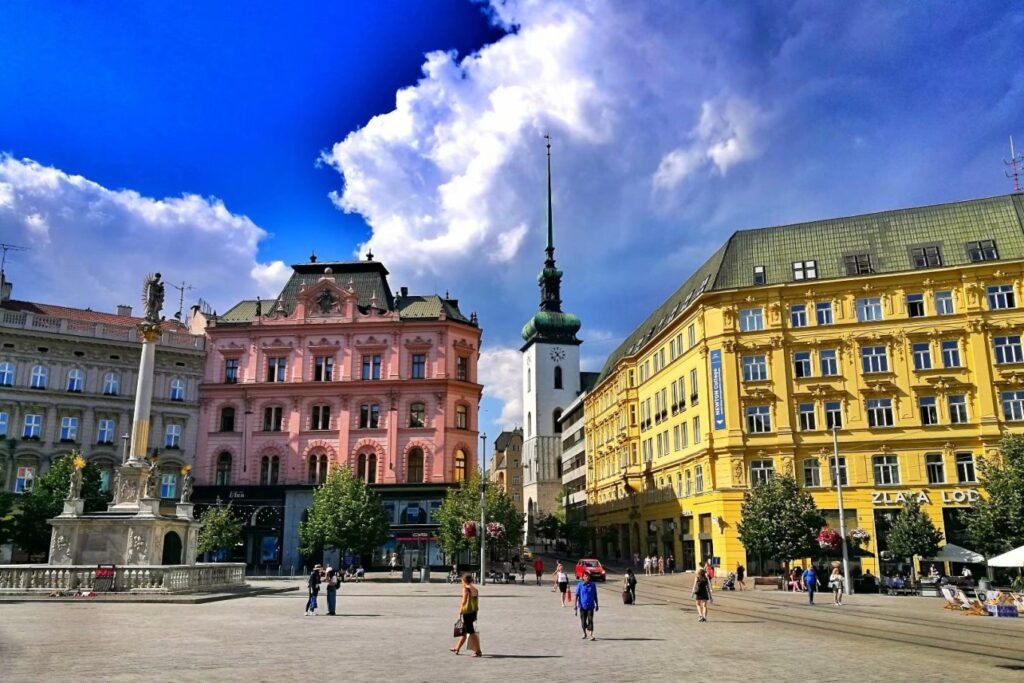
Beer Capital Brno
Departing from Bratislava, Slovakia’s capital, we arrived at Brno, the first city on our journey through the Czech Republic, just 50 kilometers away.
Our first impression of Brno was overwhelmingly positive—it’s a charming city that far exceeded our expectations. As the capital of the South Moravian Region, Brno has a population of fewer than 400,000 people, making it the second-largest city in the Czech Republic. It is also a key industrial center and rail hub. Brno lies at the eastern foothills of the Czech-Moravian Highlands, where the Svratka and Svitava rivers meet. Surrounded by rugged hills and valleys, the city’s name fittingly translates to “City of Small Hills.”
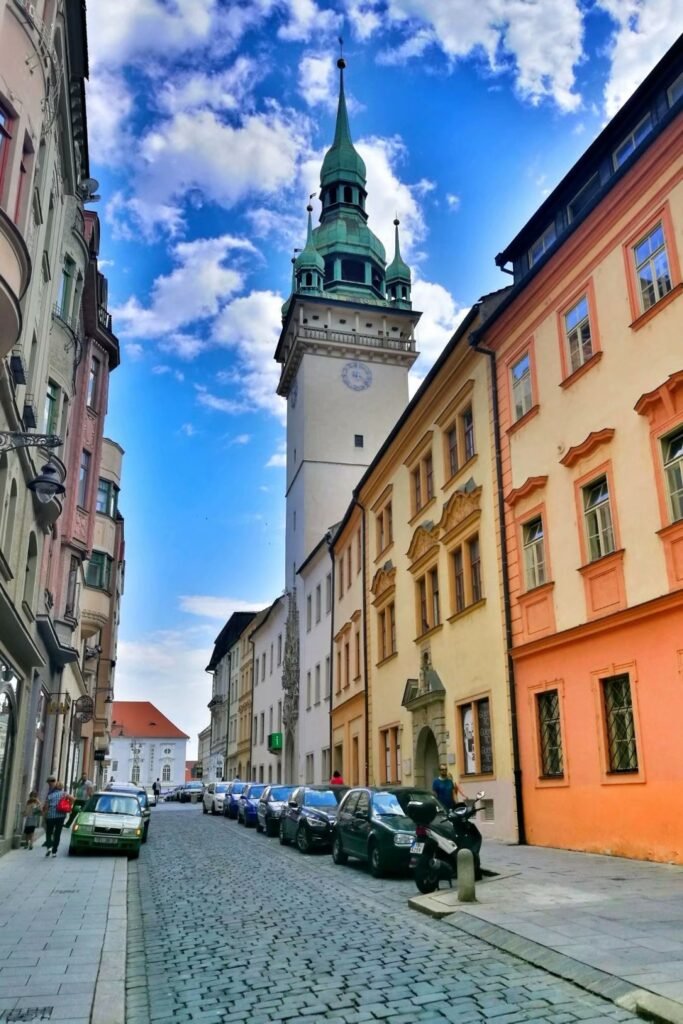

Brno’s origins lie in its fortress, with the city forming around it later. The first fortifications were built during the 9th and 10th centuries when the area was under German control. By 1243, Brno was officially chartered, becoming a German-founded city. While Brno briefly flourished as an economic and cultural hub in the 16th century, it remained largely German-speaking until the end of World War II. After the war, the expulsion of German residents under the Czech government’s de-Germanization policies transformed it into a predominantly Czech city.
Brno has a rich history as a fortified city, having withstood numerous attacks. Neither the Hussites during the Hussite Wars, the Swedes during the Thirty Years’ War, nor the Prussians in 1742 could conquer Brno. Despite these conflicts, many medieval structures remain intact, with the Špilberk Castle standing out as the most prominent. Built in 1277, the castle was initially a noble residence and was later fortified. In the late 18th century, it even served as a prison for revolutionaries. Today, the castle is a city museum. Nearby, in the Denisovy Sady Park, stands a monument commemorating Napoleon’s victory at the Battle of Austerlitz in 1805. A small chapel and tomb still mark the battlefield site, just 10 kilometers southeast of Brno.
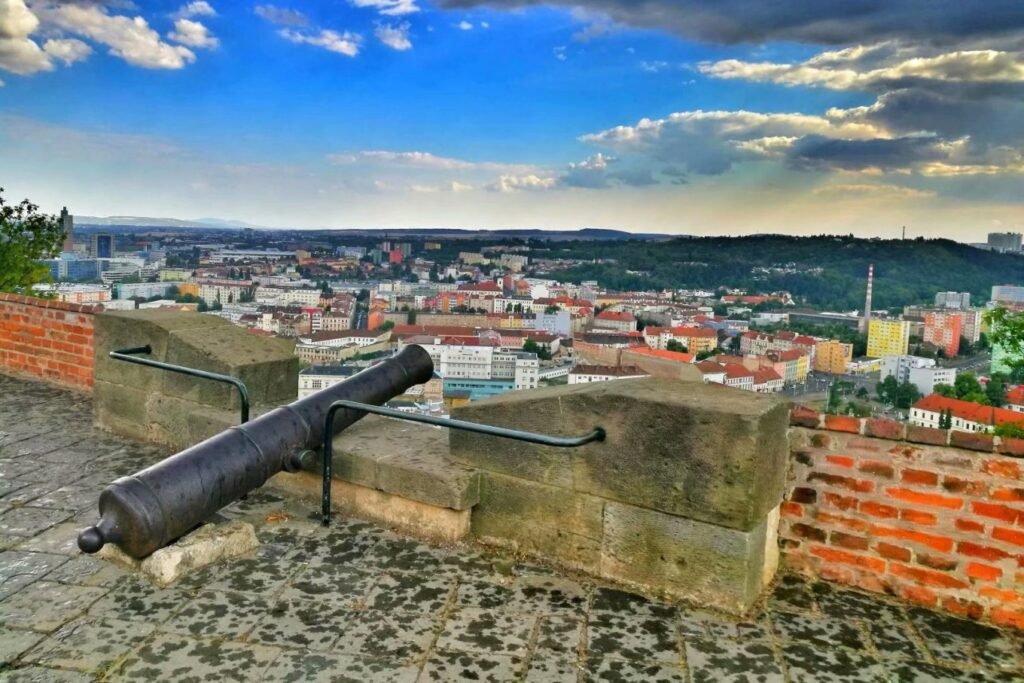
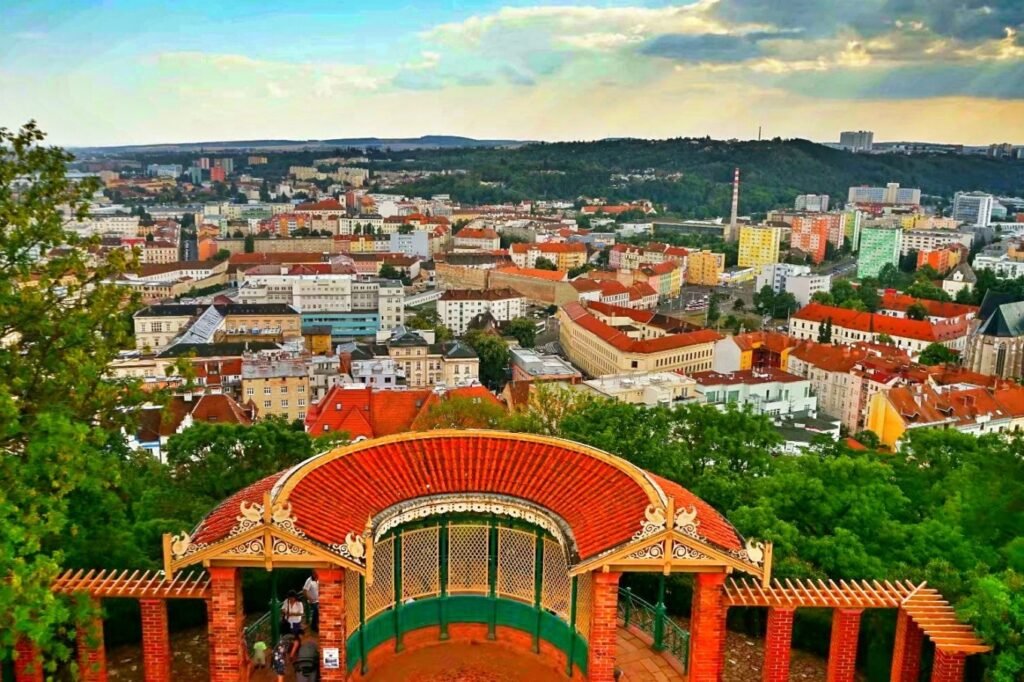
Brno is home to numerous churches, including the 14th-century St. James Church, the 15th-century Cathedral of St. Peter and Paul, and the 17th-century St. Thomas Church. These historic churches are among the city’s architectural highlights. Other notable landmarks include the Plague Column in the city center, remnants of prehistoric human settlements, the old town hall once occupied by Russian General Kutuzov, and the Masaryk University. The southwestern part of the city also hosts an exhibition park, which hosts the annual Brno International Trade Fair. Additional points of interest include the bustling Freedom Square, the Green Market famous for fresh produce, and the Moravian Museum, which houses valuable cultural artifacts.
Brno is not only a city of history but also an industrial powerhouse. Industrialization took off in the 18th century, with street gaslights installed in 1847 and electric trams operating from 1867. The city soon became known as the “Manchester of Moravia,” thanks to its thriving textile and machinery industries. Brno’s factories specialized in producing motors, chemical equipment, machinery, and tractors, while other industries included textiles, food processing, leather, and printing. The city also houses computer and precision instrument manufacturers. Brno remains the second-largest industrial hub in the Czech Republic, following Prague, and hosts the annual International Engineering Fair. It also serves as a crucial transportation hub, with multiple railways and highways intersecting here.
Visitors to Brno are often struck by the city’s distinctive cultural atmosphere. Despite being a Czech city, Brno retains strong German cultural influences, especially in its culinary traditions. One of the city’s most iconic dishes is German-style roast pork. Brno is also known for its love of alcohol, with residents consuming around 160 liters of beer per person annually, ranking among the highest worldwide. The local Pilsner beer is especially famous, and breweries in the area welcome visitors for tours. In addition to beer, Brno offers a variety of other spirits, including wine, plum brandy (slivovice), and herbal liqueur (becherovka), making it a true paradise for connoisseurs.
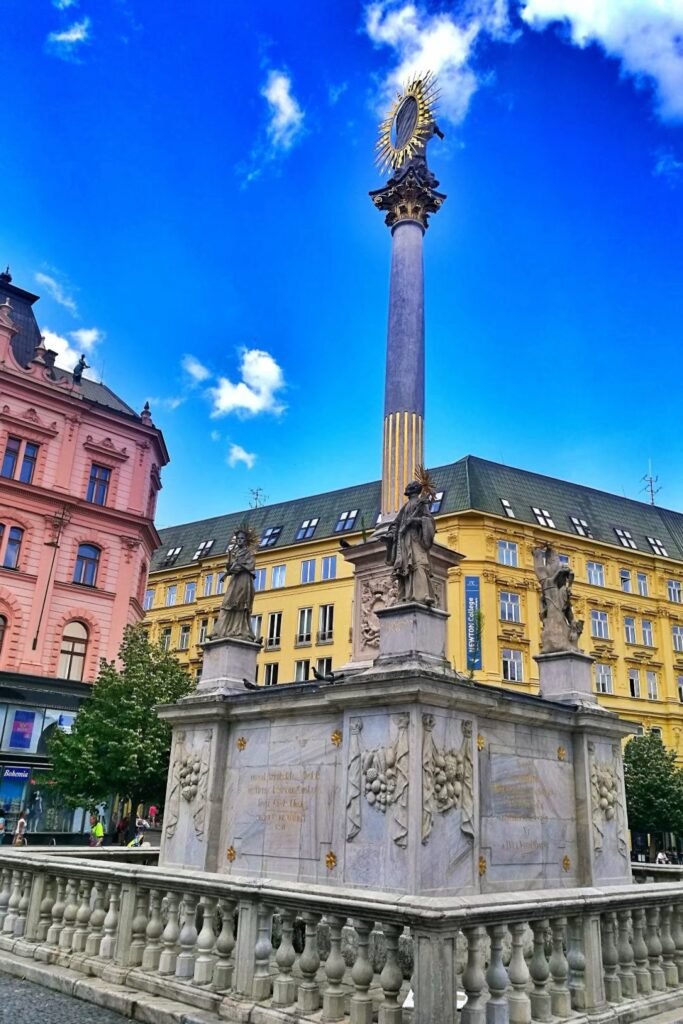
Freedom Square
Freedom Square is the most important and lively square in Brno’s old town. A main thoroughfare runs through it, bustling with traffic and crowded with visitors. Street performers often entertain passersby, and trams regularly pass through the square, adding to its dynamic atmosphere. One corner of the square features a Plague Column, while another holds a clock monument. Many of the old town’s most famous historic buildings are located around the square. From here, you can spot the towers of St. James Church and the old town hall.
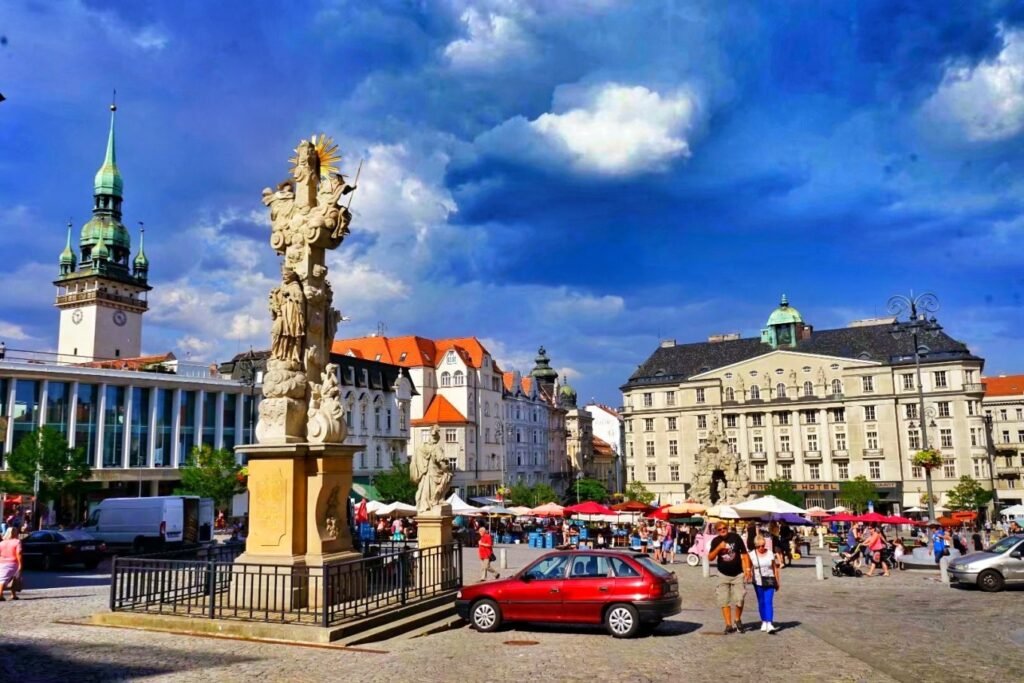

Cabbage Market
The Cabbage Market, also known as the Green Market, is famous for its morning market, where fresh vegetables, fruits, flowers, and other agricultural products are sold. The square features several notable landmarks, including the grand Parnas Fountain built from large stones and the Holy Trinity Column. Important buildings such as the Moravian Museum and the luxurious Grandezza Palace Hotel also surround the market, adding to its charm.
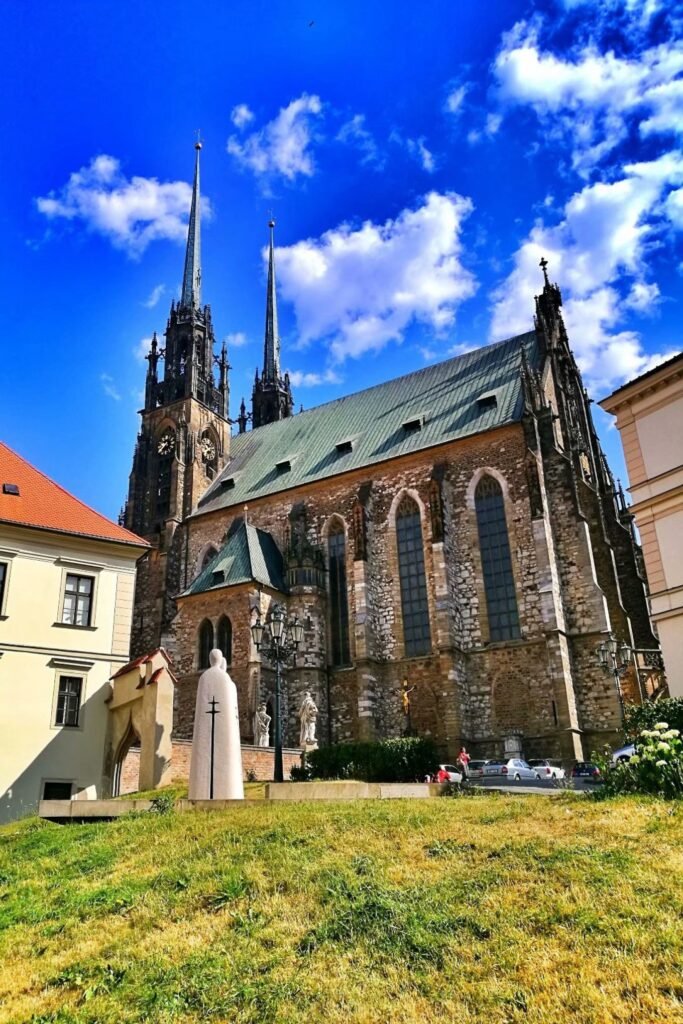
Cathedral of St. Paul
The Cathedral of St. Paul is a symbol of the city of Brno. With its grand architecture and elevated position atop a hill in the city center, it stands out prominently. Its towering presence makes it visible from almost any point in Brno’s downtown, adding to its significance as a city landmark.


